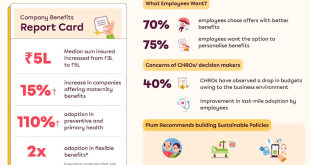NOIDA / October 11, 2022: About 200,000 pre-term babies born in India every year are at risk of developing retinopathy of prematurity (ROP), a potentially blinding disease of the retina that can occur in babies born premature or with low birth weight. Out of these, only 30,000-40,000 babies get prompt medical attention. Since the incidence of severe ROP is about 3%, it is estimated that around 5,000 children go blind in the country every year due to this entirely preventable cause of childhood blindness. This was said by doctors of ICARE Eye Hospital in Noida in the run up to the World Sight Day.
Said Dr. Saurabh Choudhry, CEO of ICARE Eye Hospital, Noida, which is among Delhi-NCR’s biggest and oldest eyecare facilities: “An eye checkup done within 4 to 6 weeks after the birth of a premature baby can identify ROP, but lack of ROP-trained ophthalmologists and neonatal care pediatricians in India is a big challenge. Low awareness about ROP among parents, healthcare workers, and counsellors add to the problem. There are only about 200 ROP specialists in India currently. The availability and affordability of services related to the care of premature babies need strengthening, along with improving the quality of neonatal care and expansion of screening and treatment programs. Increasing awareness and training pediatricians, ophthalmologists and nurses in ROP can save more children from this preventable cause of blindness.”
He added: “In India, about 1 in 1,000 children is blind. ROP is estimated to be responsible for 20% of childhood blindness, and the trend is only increasing. So, every fifth child who is blind in India can be attributed to ROP, which could have been prevented with timely intervention. Premature delivery, low birth weight, multiple pregnancies, respiratory distress, NICU admission and unregulated oxygen therapy are important risk factors for ROP. So, a premature baby born before 7 months of gestation with very low birth weight (<1.5Kg) who was admitted in NICU and received Oxygen therapy is the most vulnerable for developing ROP.” According to Dr. Saurabh Choudhry, India and other middle-income countries in the world are currently facing the third epidemic of ROP due to factors such as increased survival of preterm babies, inadequate quality of neonatal care, and low coverage of screening and treatment services for ROP. Advances in fertility treatments have also increased the incidence of prematurity in India. The survival of these babies in the past was difficult due to absence of neonatal services in many parts of the country. Since 2011, under the facility-based newborn care, a Government of India initiative, about 650 Special Newborn Care Units (SNCUs) have been established at the district level across the country over the last decade. The provision of these facilities has led to greater survival of premature babies who are at the risk of ROP. Said Dr. Saurabh Choudhry: “India accounts for the highest number of premature births in the world (3.5 million). About one in six (about 600,000) children out of these are born at 32 weeks or less gestational age. Estimating that 40% of these receive neonatal care and 80% of them survive, about 200,000 children are at the risk of developing ROP in India every year. If 10% of them develop treatable ROP, the number of newborns needing ROP management is at least 20,000 every year.” The doctor said there is a need to customize the ROP screening criteria to India. “ROP programs in India have reported sight-threatening ROP in babies even at over 1,500 gm birth weight. The guidelines followed in Western countries recommend screening babies at below 30/32 weeks or 1ess than 1,500 gm of weight. However, these guidelines cannot be followed in India, as larger and more mature babies are at risk of developing sight-threatening ROP here due to the variation in the standard of neonatal care. As many studies in India found that even more mature and heavier babies developed ROP, the revised guidelines recommend for screening all babies with birth weight of up to 2,000 gm or gestational age of up to 34 weeks.” ROP is a sight-threatening disease of the retina which can lead to permanent blindness if left untreated. It occurs due to abnormal proliferation of developing retinal blood vessels in premature and infants with low birth weight. In its severe form, ROP causes total retinal detachment, leading to blindness. ROP occurs due to premature delivery, so it is not preventable. However, with timely intervention (within a few weeks of birth), it can be cured and permanent vision loss prevented. Treatment of ROP includes laser therapy and intravitreal injections. In severe cases, vitreoretinal surgery is recommended.
 Newspatrolling.com News cum Content Syndication Portal Online
Newspatrolling.com News cum Content Syndication Portal Online






